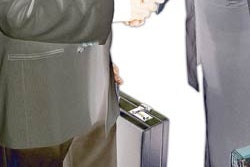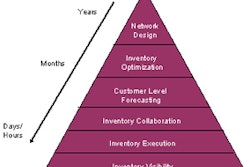
By Jari Tavi
The best-designed systems are only as good as the end-user experience they provide. This is particularly true for enterprise purchase-to-pay systems that require user adoption in order to accomplish what they were designed to do: give companies the visibility and financial control they need.
Companies have been struggling to find ways to get control over indirect purchases for quite some time by implementing policies, processes and technology. Employees, however, frustrated with inefficient and rigid purchasing processes and cumbersome internal catalogs, have often found it simpler to go around existing systems and make purchases on their own. This "maverick" buying is problematic; it makes it difficult, if not impossible, for companies to keep track of their liabilities, which in turn, can have a negative impact on cash flow, supplier relationships and spend management.
When purchases aren't being tracked throughout the system, companies can suffer from further unintended consequences. Consider the case of a company that processes 25,000-30,000 invoices per month and hundreds of thousands of invoices per year. With this volume of activity, there could be a huge number of invoices from maverick purchases that haven't been accounted for. In the extreme case, a company could be forced to restate earnings, which could affect its credibility and credit rating.
In today's competitive business environment where concerns about a recession are growing and visibility and internal control are mandated by the Sarbanes-Oxley (SOX) Act, these problems are unacceptable. While finding a solution has been difficult, companies realize that the answer lies in increasing user adoption. Without broad user participation, companies have little visibility into, or control over, employee purchasing.
Many companies have turned to technology to help them solve these problems. Unfortunately, while providing some efficiencies, the first generation of e-procurement tools was not built to address user requirements. Designed instead to meet the needs of procurement professionals, these tools were inflexible and difficult to use. The second-generation e-procurement solutions that followed were also limited. While they leveraged Web-based technology and aimed to reach end-users as well as procurement professionals, they still lacked the flexibility and ease-of-use needed to attract broad usage.
Gen 3 e-Procurement
Now new third-generation e-procurement technology offers the ease-of-use and flexibility needed to encourage broad usage in desktops throughout an organization. Combined with robust invoice automation solutions, today's organizations have tools to enable them to have the visibility and control that they need. What has made these technologies so effective in generating broad adoption? What policies and practices do companies need to implement to support effective purchase-to-pay processes? When planning the deployment of an e-procurement system — or any enterprise system, for that matter, keep in mind the following best practices to encourage user buy-in, a successful product rollout and, ultimately, more effective processes:
- Create a successful user experience. The best technology solutions focus on three things: the user, the user, the user. Technology solutions must be designed from the very beginning with the user in mind. How will the solution be used? What problems will it help solve? How do users like to work? How easy and intuitive can you make it? Similarly, the technology training needs to be simple. Any solution that requires numerous training sessions and thick user manuals will face major resistance.
- Focus on the processes. It's critical to have good processes in place before implementing a technology solution. Consider your organization's needs and determine how your processes can be improved. Instead of focusing on workflow technology, which supplements existing manual practices with computerized ones, focus on technology that offers true automation to streamline practices. Automation applies technology to design rules-driven processes to make operations more effective and efficient. It enables companies to work smarter as well as faster, and it provides a better, more satisfying user experience.
- Create a culture that enables change. Starting with the design phase, create cross-functional teams to address your organization's process and technology needs in purchase-to-pay. Cross-functional teams involve business users in finding solutions to their problems. Truly listen to and consider what these subject matter experts are saying about their requirements. Include the chief financial officer (CFO), procurement professionals, accounts payable staff and, most of all, business users, and involve them early and often throughout the process. This will help ensure that the solution reflects the needs of the various stakeholders, and it helps establish ownership.
- Develop a solution that is both easy to use and complex. The more complex a product is, the easier it should be. While this may sound like a Zen paradox, it is the crux of successful product development. A robust product that offers a high degree of automation will handle the complex tasks that users don't have the time or desire to address. Who wants to view thousands of accounting codes when making a purchase? A robust, rules-based system will do the heavy lifting in the background and only present users with the accounting codes that are appropriate for their roles. The ultimate goal of automation is to make the user experience as effortless as possible and enable the system to automate complex bookkeeping standards and general ledger rules — as well as company business rules and policies — so users don't have to.
- Build flexibility into the solution. When it comes to procurement, offer users opportunities to purchase using catalog and non-catalog tools such as Yellow Pages, free text and purchase plans. If you don't offer what users want, they won't use it. Also, be sure that your solution is agile enough to adapt to changing needs and business priorities so it can continue to provide value without missing a beat as your organization changes.
- Don't try to do everything all at once. Instead of attempting to change all purchasing or accounts payable processes at once, create a larger blueprint, but focus initially on the quick wins. By thinking big, but starting small, you will avoid long and costly reengineering projects that delay bringing value into your organization. Instead, create clearly defined key performance indicators (KPIs) that enable you to measure progress against current methods. In addition to realizing immediate improvements, you will continue learning about the needs of your users and your organization, and you can incorporate these lessons into your KPIs to promote continuous improvement.
- Break down the silos. Solutions that only impact one silo or department not only are extremely limited and inefficient, they are also frustrating for users who need to interact with other areas of the organization. The most powerful solutions encompass the entire area of purchase-to-pay, from purchasing to invoice processing. Not only do holistic solutions make the most business sense as they provide benefits throughout the financial value chain, but they also give users the visibility they need throughout the entire purchase-to-pay process so they can fix bottlenecks and ensure they are achieving desired results.
Generating user adoption is not a simple feat. It involves a great degree of organizational commitment to process improvement and change management. To support best practices, companies need to implement automated solutions that have complex, robust functionality but are simple to use. Creating a successful user experience is the penultimate challenge, and if organizations can achieve buy-in and broad adoption, they will gain visibility and knowledge into their spend. They will be able to more effectively manage cash flow, supplier relationships and spend to achieve a whole new level of savings, control and continuous improvement.
About the Author: Jari Tavi is chief technology officer of Basware Corp. (www.basware.com), a provider of software solutions that automate the Purchase-to-pay process for enterprises around the world. You can reach him at first name.last [email protected], or call 203-487-7905 for more information.



















